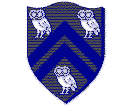|
|
home > integration > BIOE464 |
||||||||||
BIOE464 - Extracellular Matrix |
|||||||||||
|
Development of an Undergraduate Bioengineering elective in Extracellular Matrix This course will address the biology, organization, mechanics, and turnover of extracellular matrix. There will be an emphasis on cells and cell-matrix interactions, matrix distributions in connective tissues and organs, techniques for measurement and modeling, changes with growth and aging, and tissue/matrix degradation including enzyme kinetics. Overview: As a new faculty member in the fall of 2003, I was asked to develop a course for the departmental Bioengineering curriculum. I was particularly interested in developing an elective course that our undergraduates would find interesting and useful, and that would build upon their previous coursework. As my interests fall into our "Biomaterials and Biomechanics" and "Cellular and Molecular Engineering" pathways, I decided to build a course around the topic of Extracellular Matrix. Extracellular matrix is barely covered in bioscience courses such as cell biology and biochemistry courses, although bioengineers may learn about it in their biomechanics and tissue engineering classes. I decided to include broad aspects of this topic ranging from cell mechanotransduction through tissue pathology. The integration of cell biology into the course material was therefore very straightforward. Engineering topics such as the material properties of collagen, elastin, and proteoglycans were covered throughout the course and were often presented hand-in-hand with the biological activities of these molecules. Syllabus, topics, and schedule: see poster (PPT) for table with overview of topics. See syllabus for a longer version of this table including the schedule. Course materials: See list of readings. Projects: See poster (PPT) for the range of topics available for special topic group reports and the report milestones. Special Features: I presented a substantial amount of material on proteoglycans and glycosaminoglycans, a topic that most students have never seen before. They responded very well to this topic and asked that I incorporate more of this subject in future years. I also spent several days covering biochemical assays and techniques that can be used to quantify or identify extracellular matrix. This was also a very popular section of the course. Integration into curriculum: This course was designed as an elective for senior undergraduate students in the BBM and CME pathways. It builds upon their backgrounds in biomaterials, biomechanics, cellular engineering, physiology, and cell biology. However, several first and second year bioengineering graduate students also enrolled in the course. For some of these students, the course material served as an introduction to the biological aspects of our field. To other students, this course was very complementary to their related courses in graduate physiology, continuum biomechanics, and tissue engineering. Overall, we have found that the course occupies a unique and useful position in the curriculum. |
|||||||||||
All complaints/suggestions can be sent to the webmaster.

